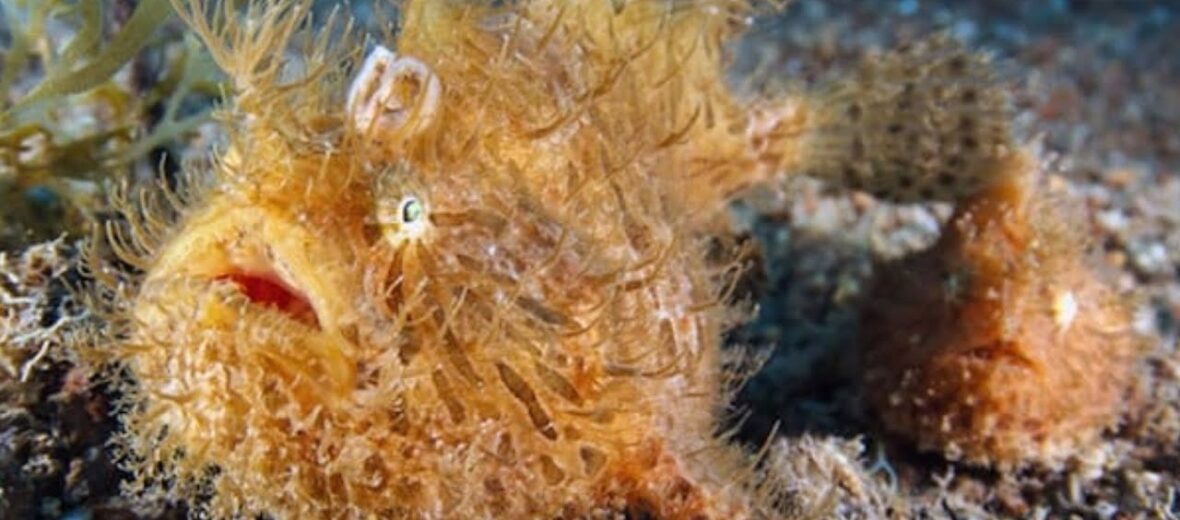
The hairy frogfish is a master at its craft; that being the craft of an ambush hunter. Using excellent aggressive, mimicry-based camouflage it lays in wait for passing prey to take an interest in the lure (esca) at the end of the rod (illicium) on its head. As soon as a fish comes close enough… Wham! They are engulfed in less than a split second. These cool critters can be found in the tropical and subtropical waters off the coasts of the Atlantic, the Gulf of Mexico, the Red Sea, the eastern coast of Africa, Hawaiian islands, Japan, Australia, and New Zealand. Fortunately, their numbers are stable and they are listed as Least Concern by the IUCN.
First the Stats…
Scientific name: Antennarius striatus
Weight: Up to 1.2 ounces
Length: Up to 9.8 inches
Lifespan: Up to 20 years
Now on to the Facts!
1.) There are approximately 46 known species of frogfish.
2.) These critters are part of the anglerfish family.
3.) Frogfish have very stretchy stomachs that can enlarge to 2x their body length and they can extend their mouths up to 12x its normal size!
4.) They can change their colors to match their surroundings, but this task takes weeks to accomplish. Unlike the chameleon, who takes mere minutes.
5.) The hairy frogfish preys on fish and crustaceans.
But wait, there’s more on the hairy frogfish!
6.) Frogfish are preyed on by larger fish, sharks, moray eels, and other anglerfish.
7.) Hairy frogfish seldom swims. They prefer to walk, using their modified dorsal appendages.
Did you know…?
They may move about slowly, but the frogfish’s attack has been recorded to be 1/6,000th of a second! That makes it the fastest strike of any vertebrate on earth!
8.) In the Maldives, in a recent mass coral bleaching event, frogfish were seen to be totally white, in an effort to camouflage themselves against the dead and bleached coral.
9.) The lure of this species of frogfish has been seen to be biofluorescent. This enables the fish to attract prey in the dark.
10.) When the frogfish does swim, they do so via jet propulsion. It will use tube-like, backward-facing gill openings that propel it forward rather than using a tail, like most fish do.
But wait, there’s still more on the hairy frogfish!
11.) Females can lay up to 180,000 eggs at one time.
Did you know…?
The female striated frogfish refuses to tolerate the smaller male after fertilization, and may eat him if he sticks around too long.
12.) The eggs are attached to a buoyant string of mucus which looks like a ribbon and is called an epipelagic egg raft. Once the eggs are released into the egg raft, the male will fertilize them right away.
13.) When the eggs hatch, the fry look like miniature versions of the adults, but lack the lure. That develops later.
14.) Hairy or striated frogfish typically mimic algae and soft corals. However, they can also copy the look of venomous black urchins.
15.) Frogfish are sexually dimorphic as the males are diminutive compared to the female.
Now a Short Hairy Frogfish Video!
Also, check out the Critter Science YouTube channel. Videos added frequently!
Want to suggest a critter for me to write about? Let me know here.



